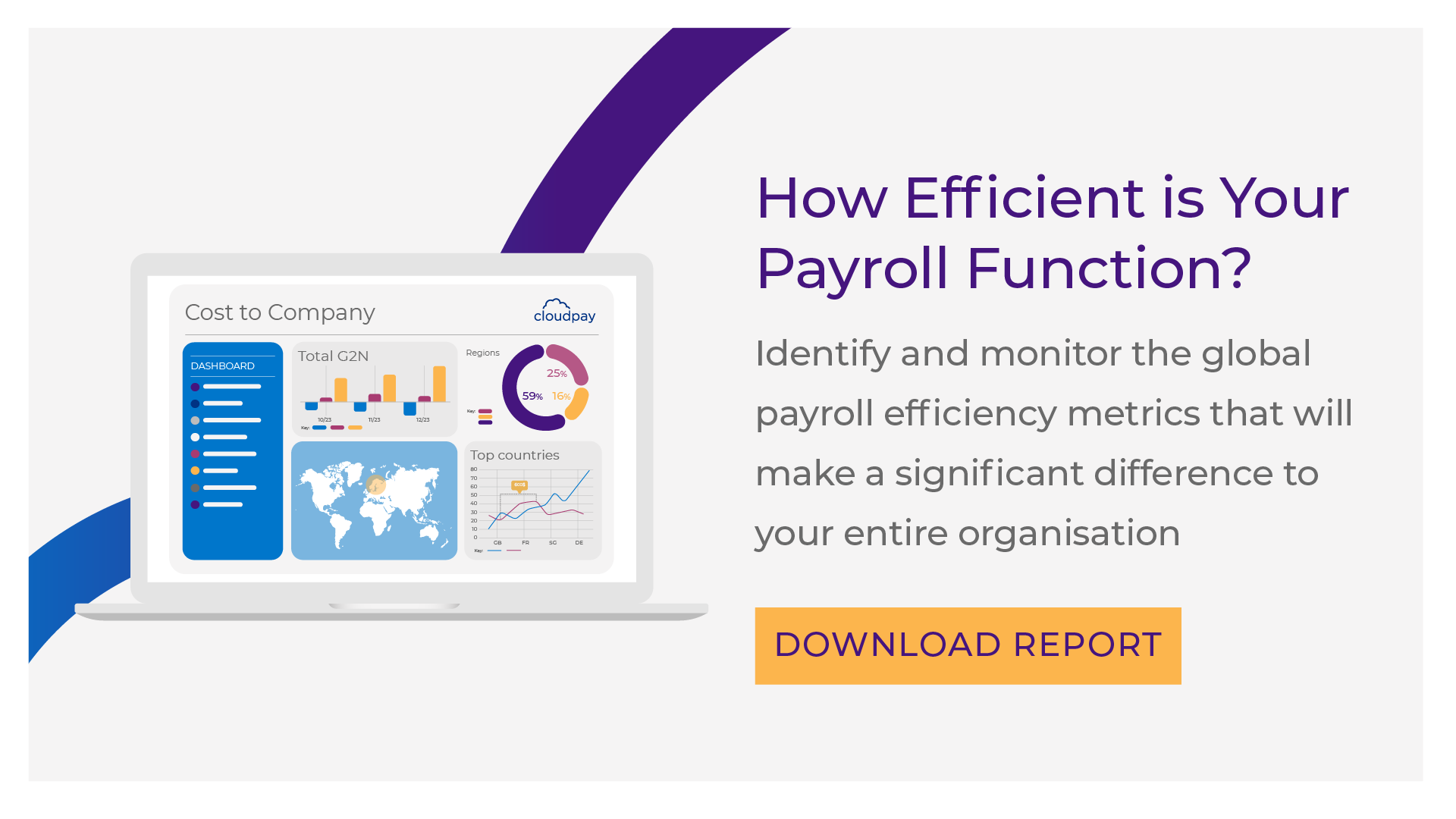Payroll data has huge potential to inform and guide the future strategy of a business – and yet there are still countless organizations all over the world that are overlooking this potential. It can shine new light on the performance, sentiments and preferences of your workforce, and make the most of your talent at a time when acquisition and retention are exceptionally difficult.
To unlock these insights, it’s vital that old mindsets around payroll being a purely functional and administrative area are swept away. Instead, payroll should be given a chance to make a contribution to wider strategy, starting with payroll and payments analytics that can make sense of all the data at a business’s disposal.
In this blog, we’ll explore all the areas in which payroll and payments analytics can support prosperity for your business in areas previously unconnected to payroll.
How can payroll and payments analytics drive business growth?
One of the key findings from our 2023 Payroll Efficiency Index Report is the vital relationship between payroll and payments data. By only using one or the other for data analysis, business leaders can be lured into making decisions based on just a partial view of the full story. By looking at the bigger picture of what combined payments and payroll data analytics can reveal, it’s possible to make a real impact right across your organization, including:
Informing strategic business decisions
Analyzing payroll performance makes it possible to create annual forecasts with a much greater degree of accuracy and confidence. This supports better management of cash flow and budgeting, and also means that the financial impact of any future business strategies can be better estimated and quantified. For example, if you need to make decisions about opening new offices or setting up new teams in different countries, payroll data can help you take tax, salary, benefits, and set-up costs into consideration.
Making better hiring choices and improving employee retention
Connected to the previous point, payroll data can also support all the key decisions related to hiring and talent acquisition. For example, is it better to hire full-time or temporary workers? Is there a connection between rates of pay and employee satisfaction? Are differing rates of payroll convenience and timeliness making a positive or negative difference? And do any of the aforementioned vary according to particular employee demographics? Uncovering trends here can help you work out exactly what you can do to make changes for the better, such as exploring on-demand pay and pay-to-card payments to deliver the experience employees are looking for.
Ensuring compliance
Payroll analytics require a certain amount of consistency within the data in order to be effective. This can deliver the knock-on benefit of easing reporting and auditing processes when particular types of information (such as salary, deductions, and tax/social security contributions) have to be declared. Given the variation in requirements from one country to another, and the severe penalties for non-compliance in this area, ensuring payroll and payments functions are integrated and working together seamlessly can be a real time and stress-saver.
Cutting out errors
The risk of human error in payroll can’t be underestimated. Payroll can account for as much as half of all the overheads in a major international business, so even the smallest mistake can have a huge impact. Payroll analytics has a huge role to play in identifying the root cause of any problems, whether they’re caused by a short calendar length that means payroll is rushed, or simply down to issues in data input. Knowing what those causes are means the right solutions can be applied to remediate them.
Planning for future growth
The level of detail to which payroll insights can inform future business decision-making can be transformative to your organization. For example, if you have a team with a large number of older employees, then you can identify that some may be near to retirement and therefore start planning a smooth transition when they need to be replaced. At a global level, it can also highlight trends in the expenditure of employing staff in one country over another, and help you find out ways to expand or shift operations for maximum cost efficiency.
In summary
As this blog demonstrates, good visibility and insights into your payroll data can empower your senior management to make the right decisions in the short term and the long term. But to be able to do that, you have to have the right systems in place to gather and analyze that data – and that can be easier said than done.
Businesses that have outdated payroll systems, or disparities in systems and data across different territories, will find it much harder to uncover those insights. That’s why it’s so important to have an integrated, global system in place, one that can automatically integrate with other key business systems in finance and human resources.
Only then will you be able to gain the quality payroll data and analysis you need quickly and easily, and consistently make good data-driven decisions.
To find out how CloudPay can support you with payroll data and analytics, get in touch with our team, then read our Payroll Efficiency Index report to explore the current global and regional benchmarks in payroll performance



